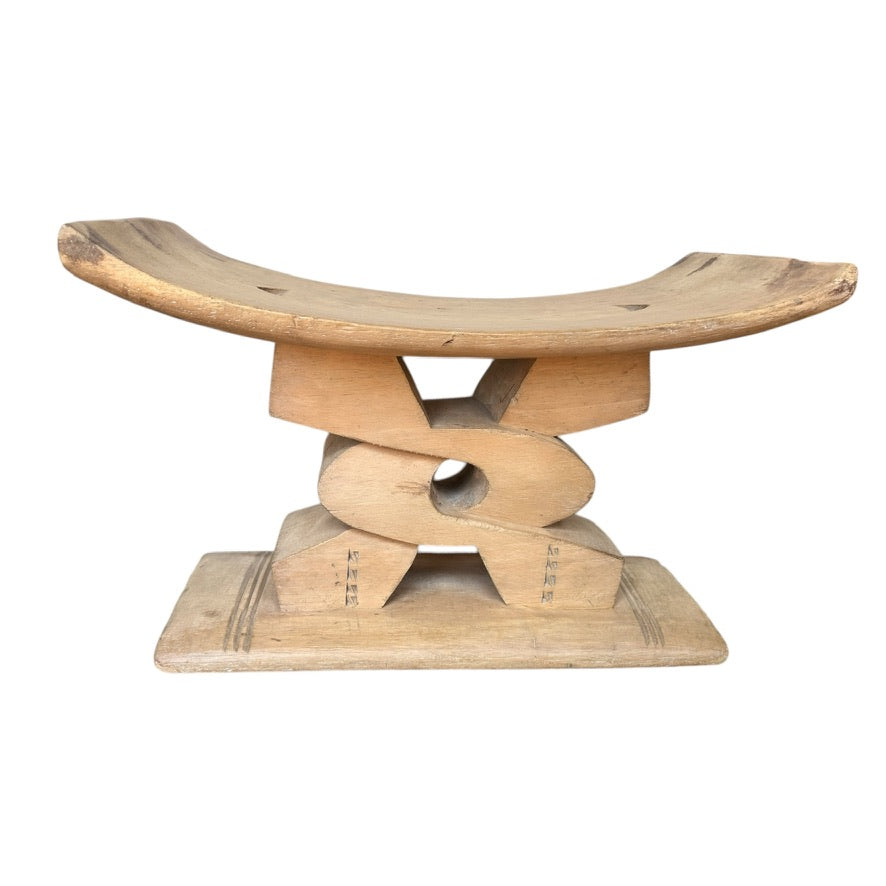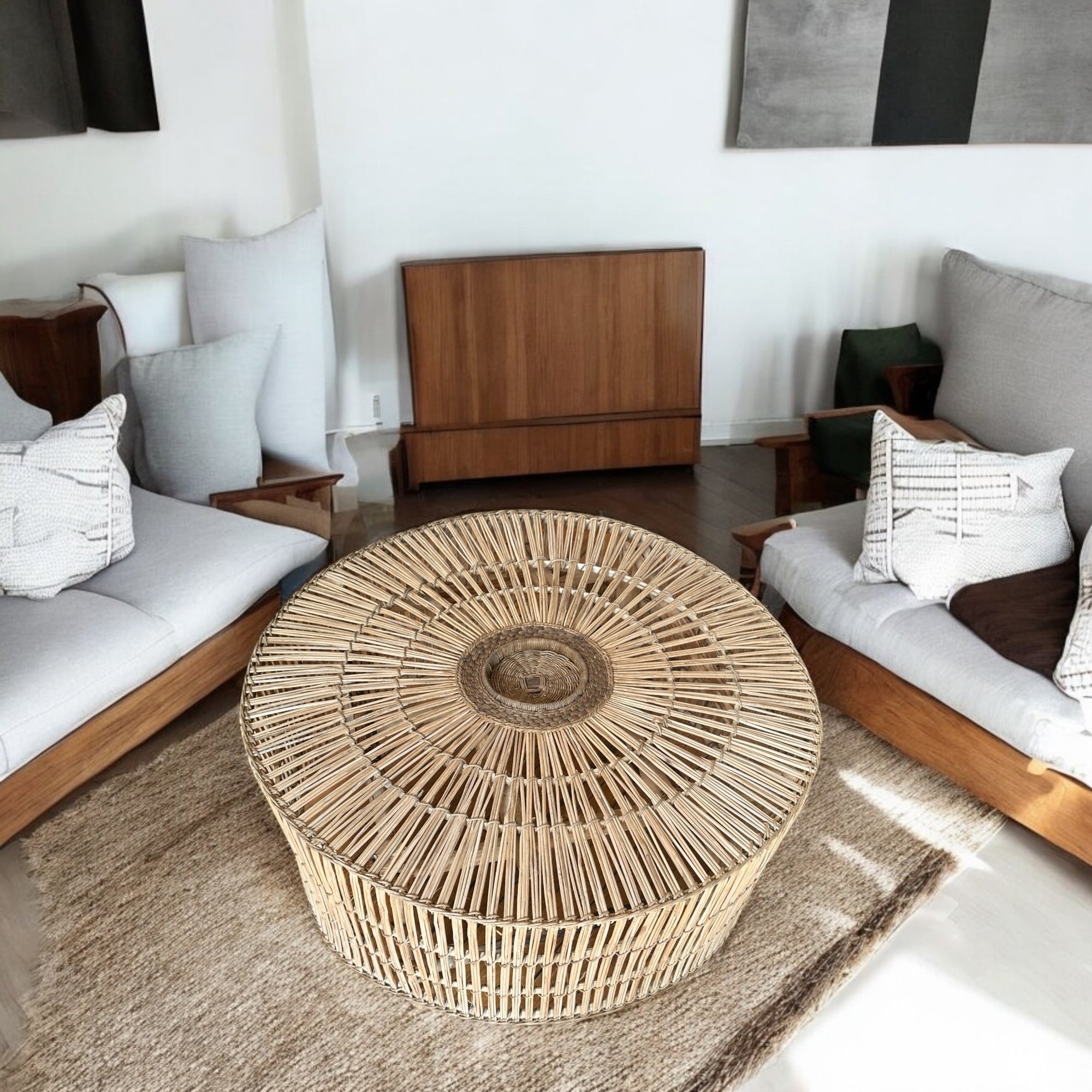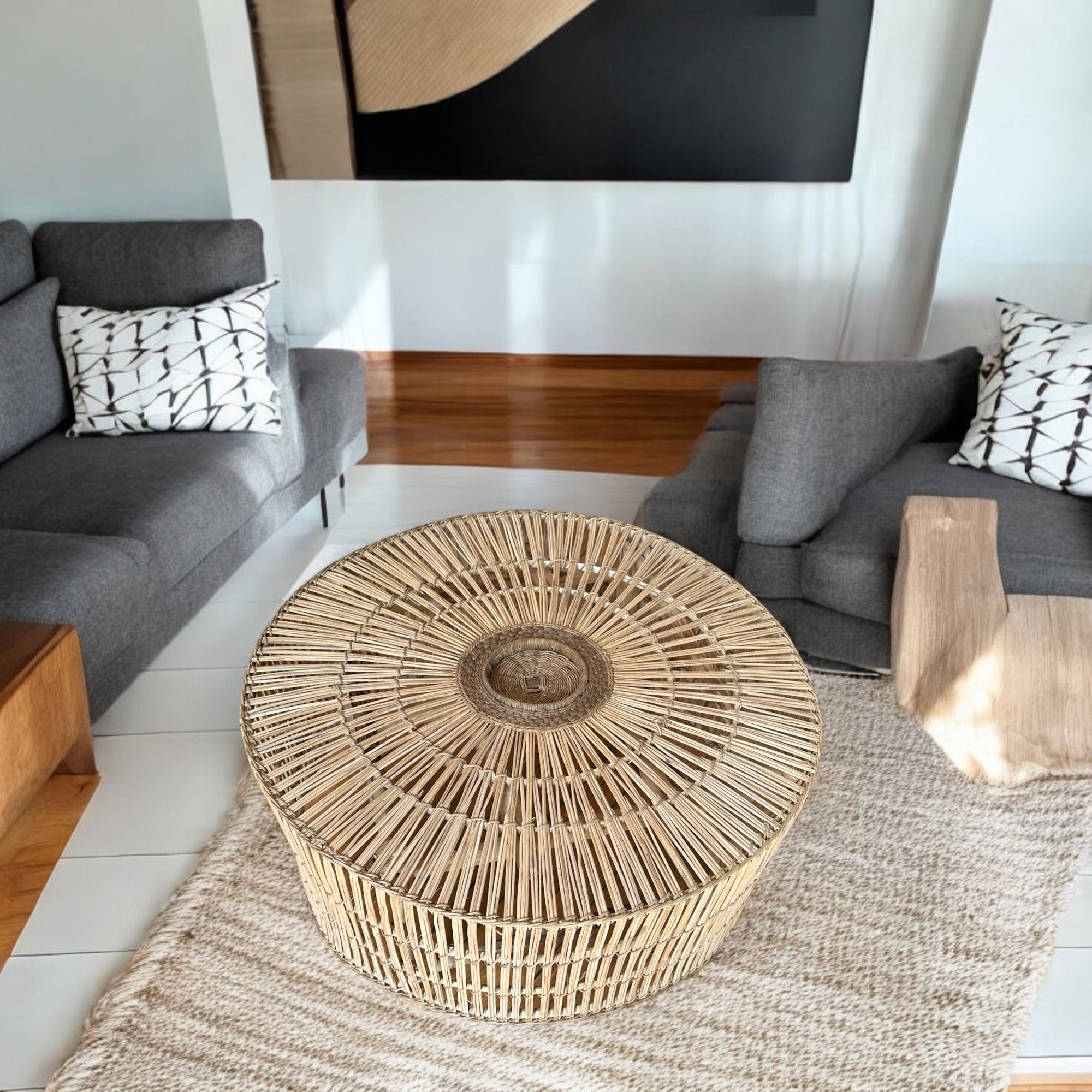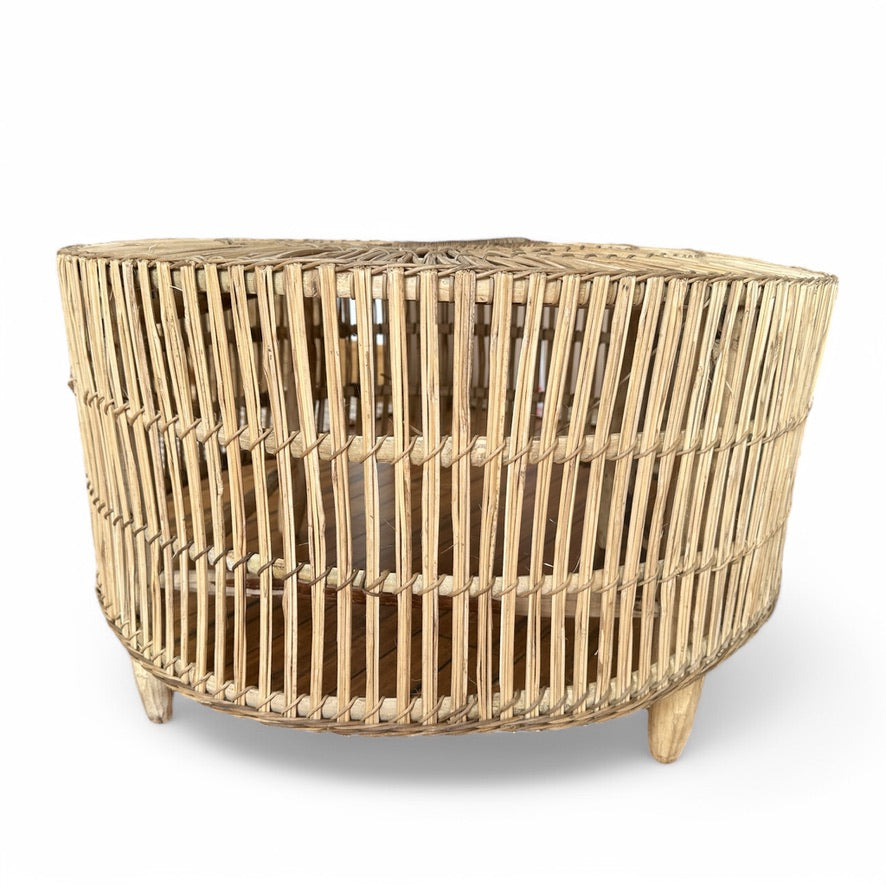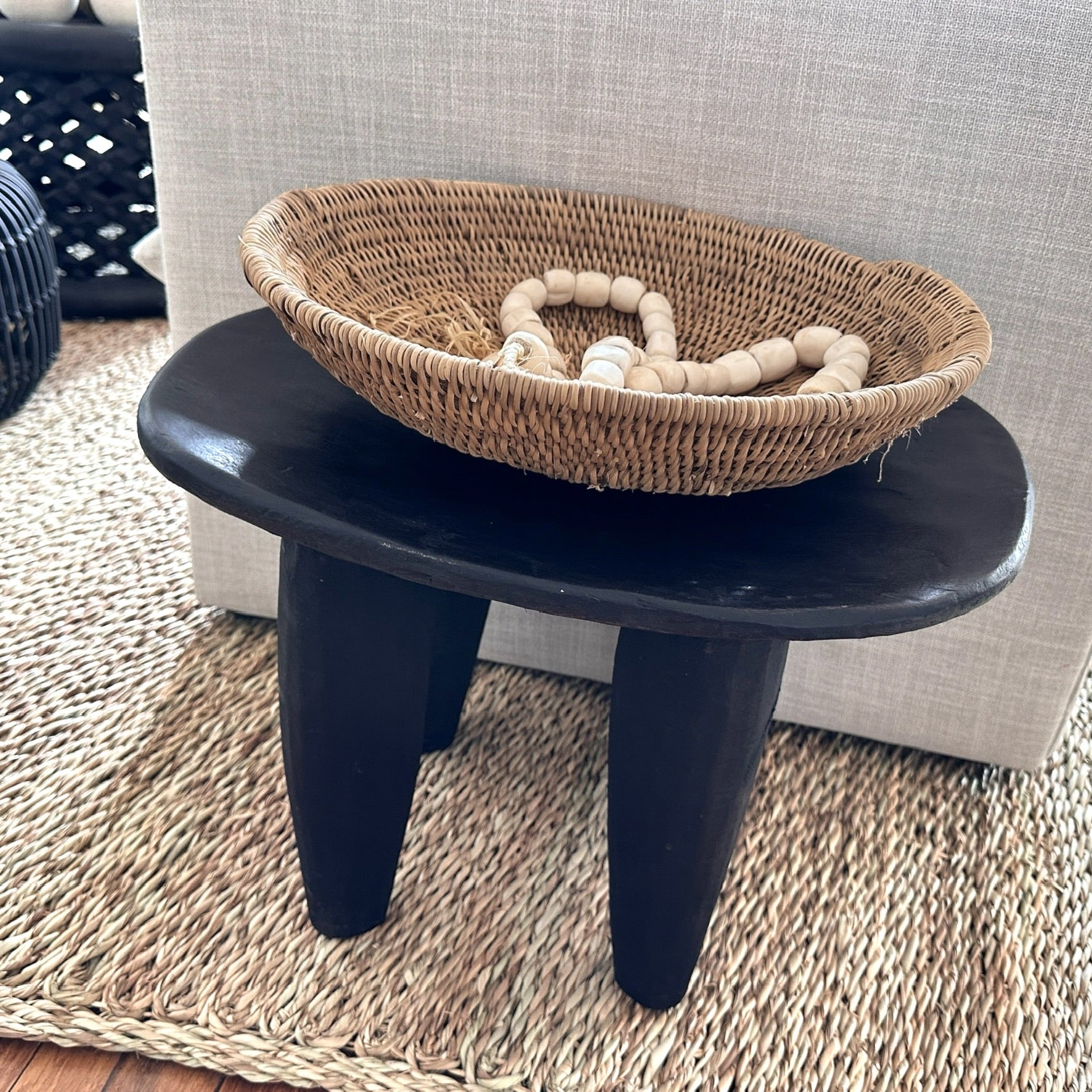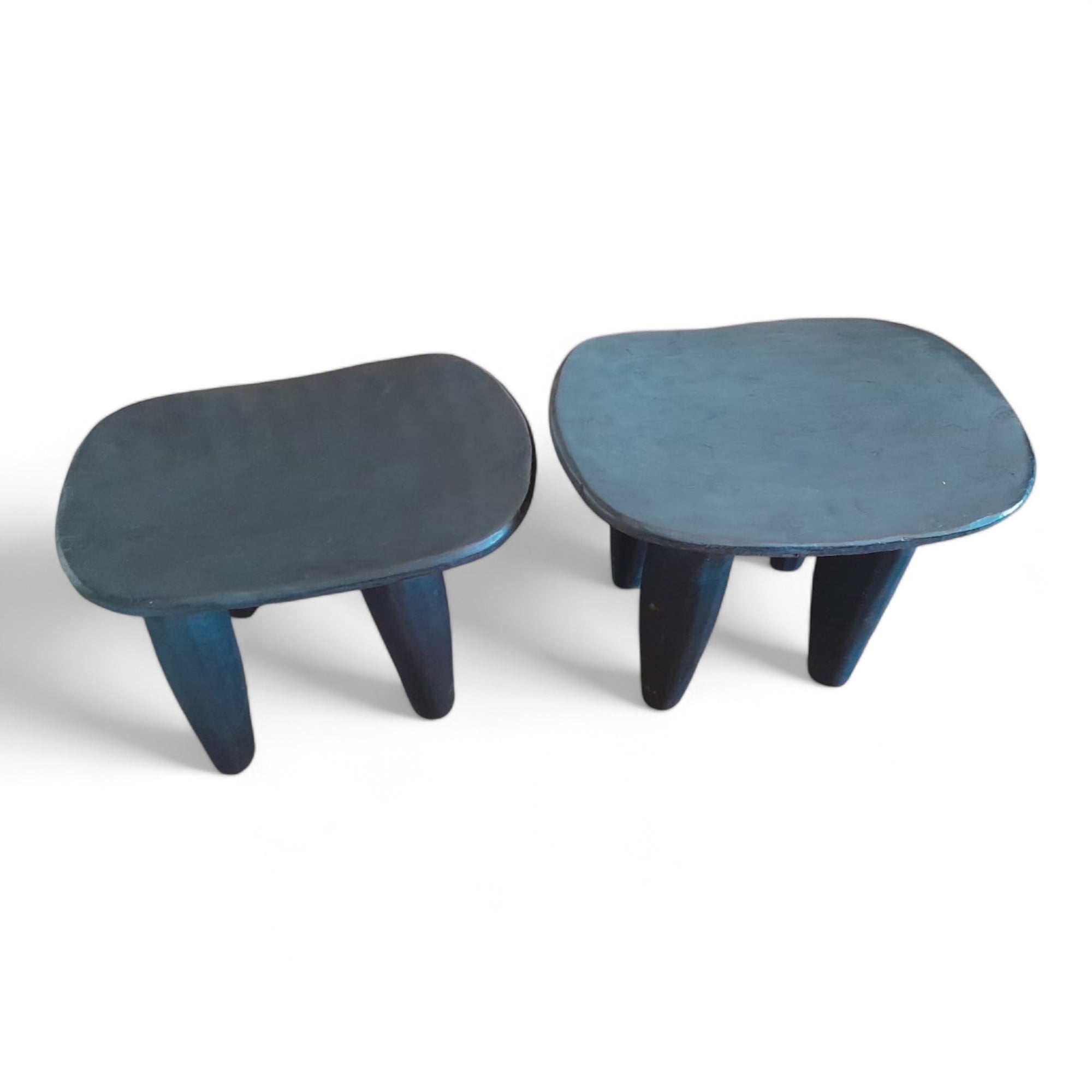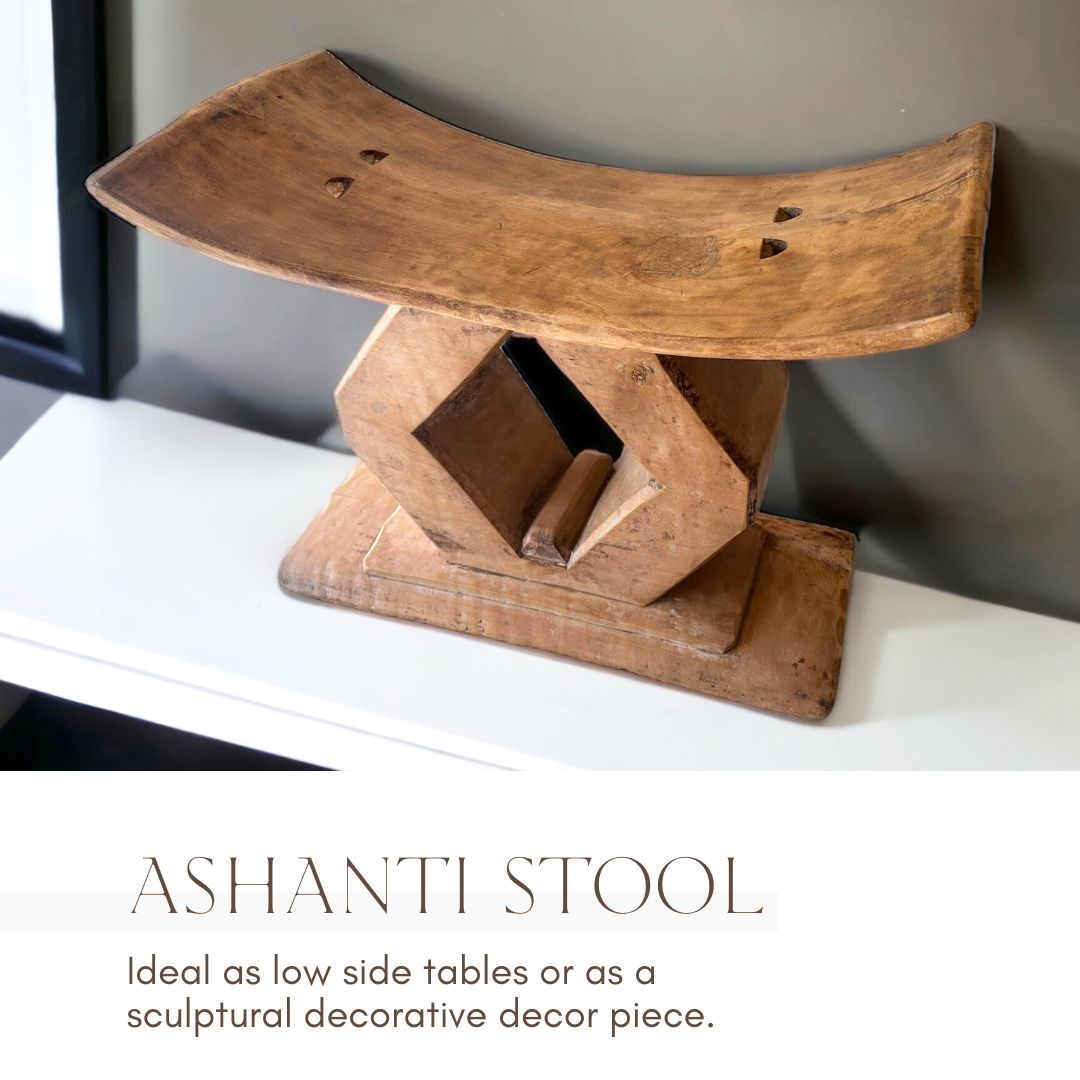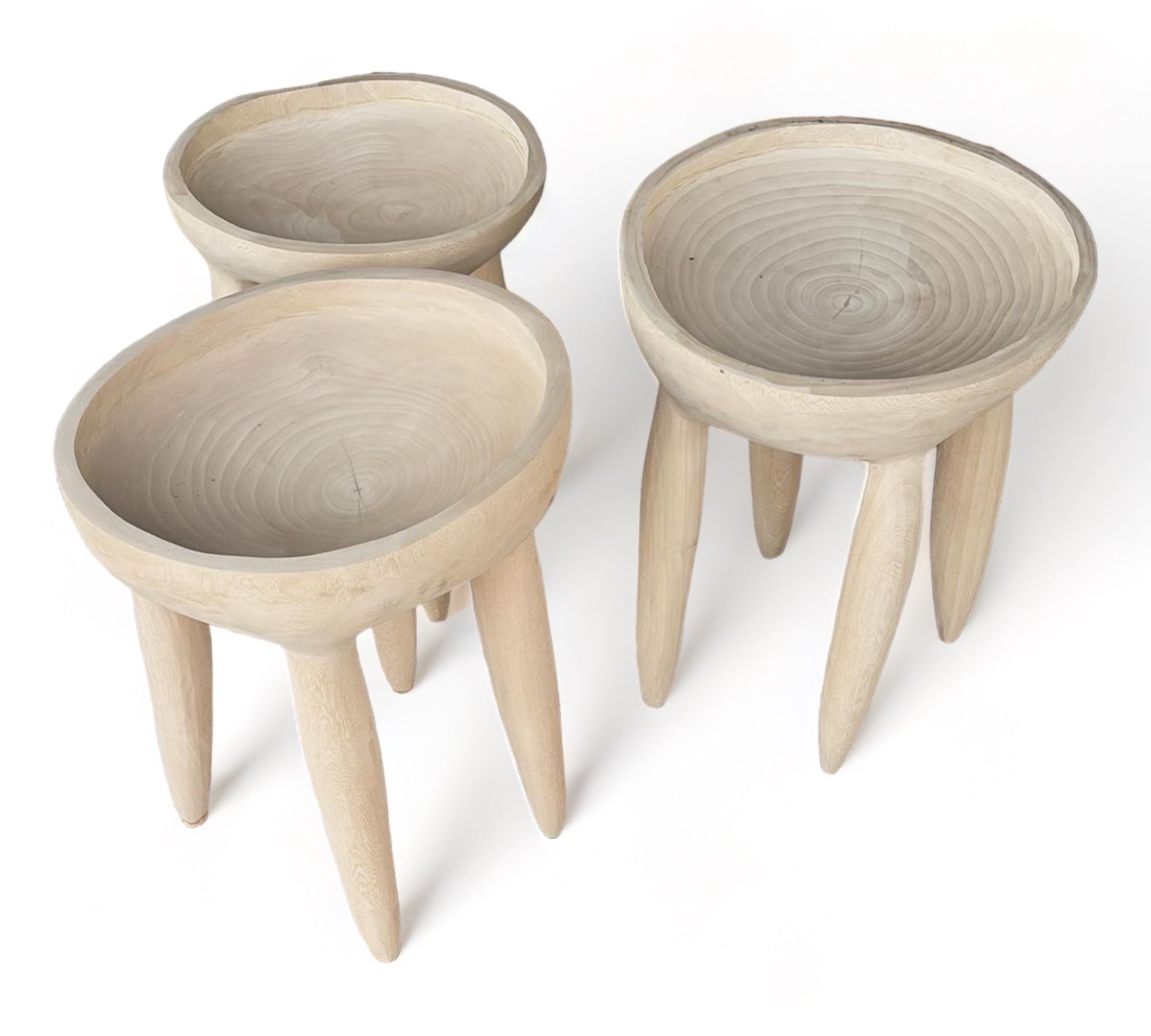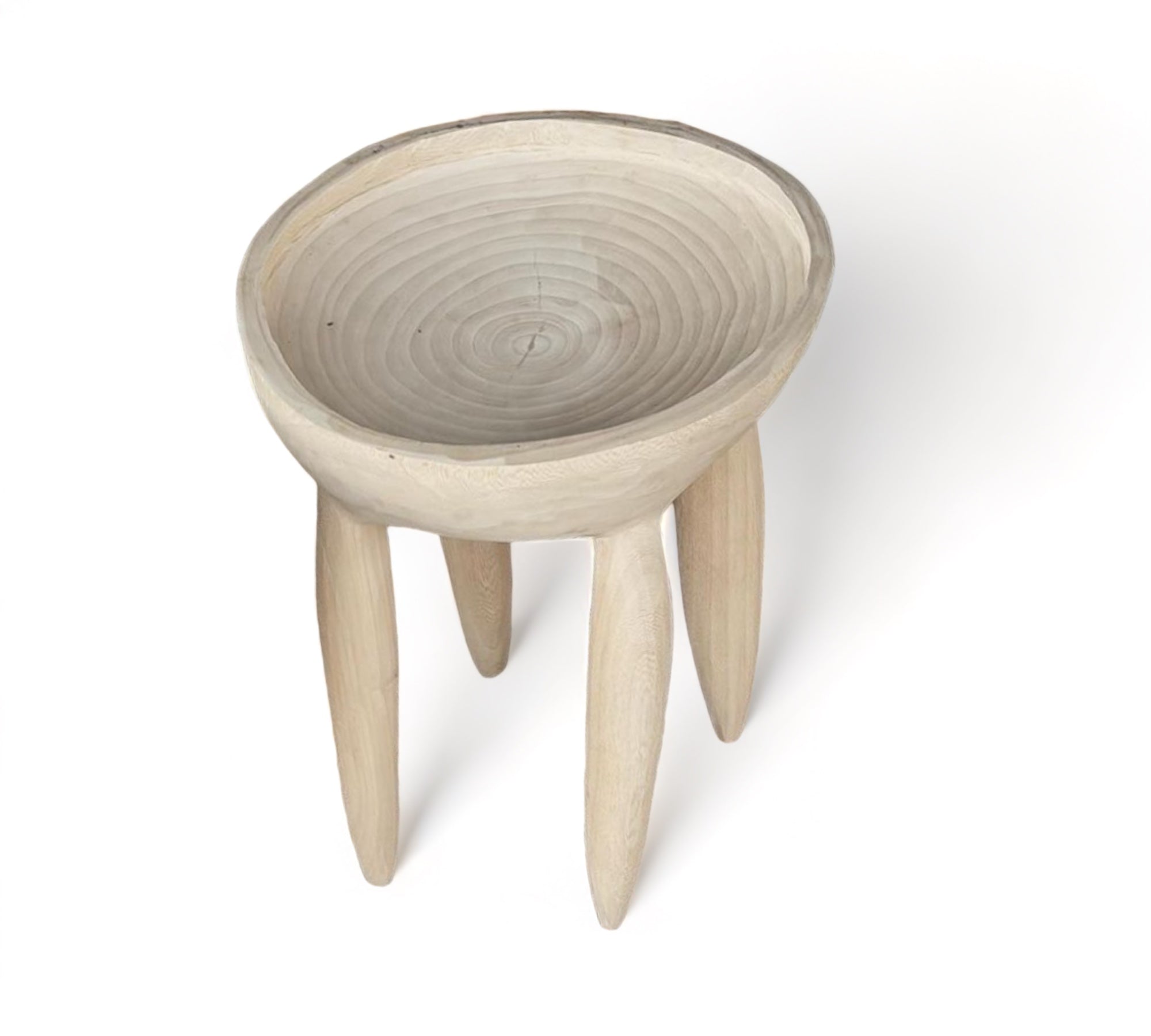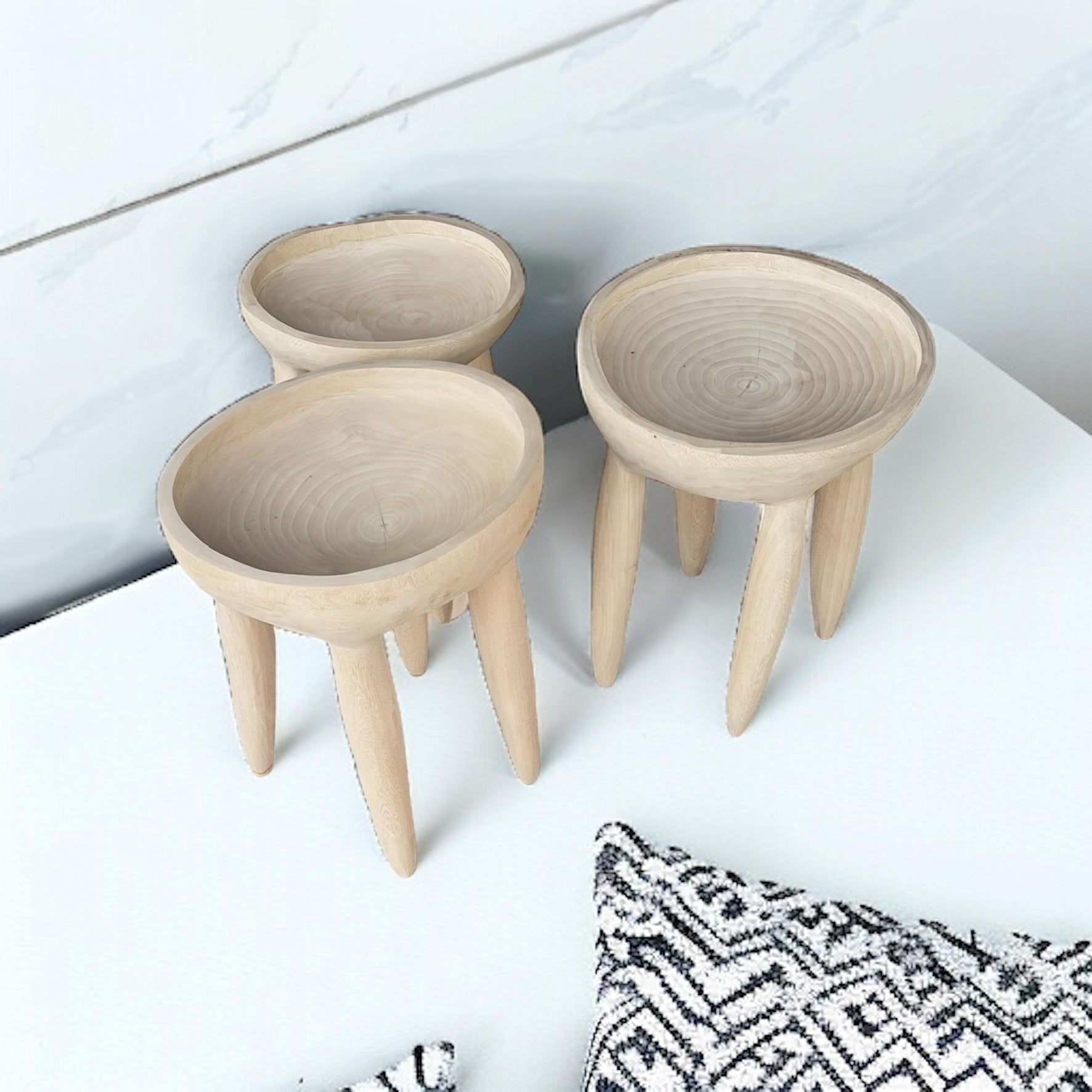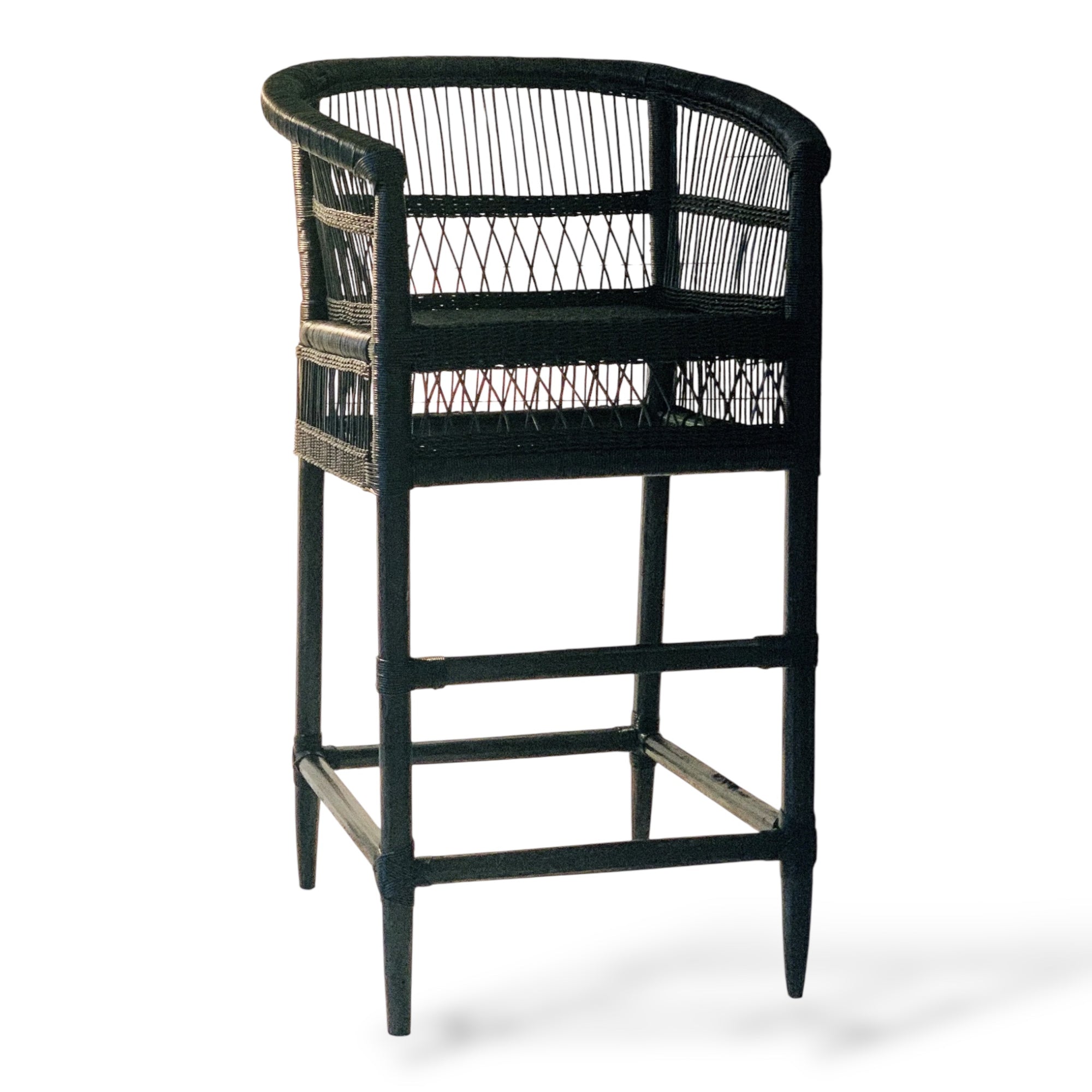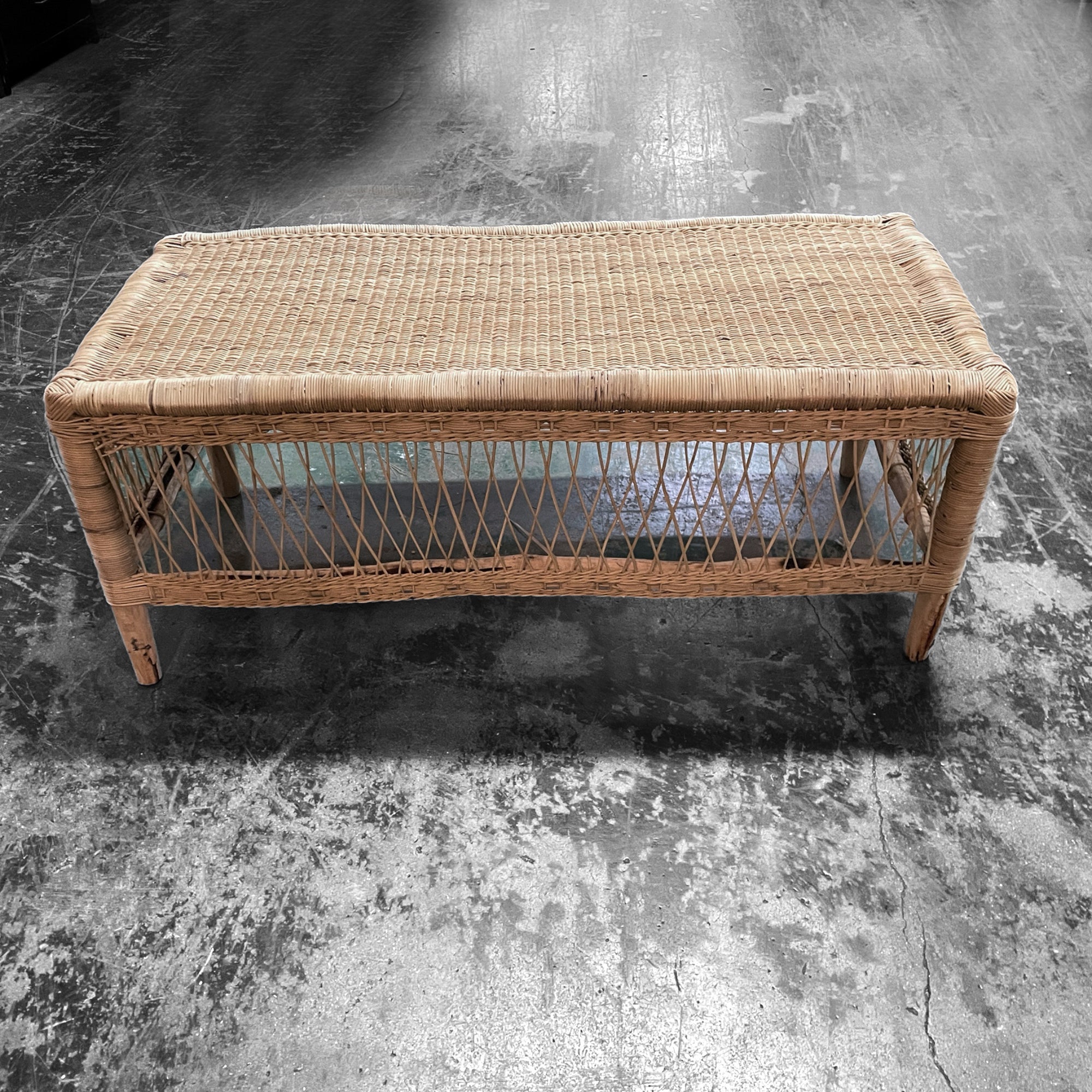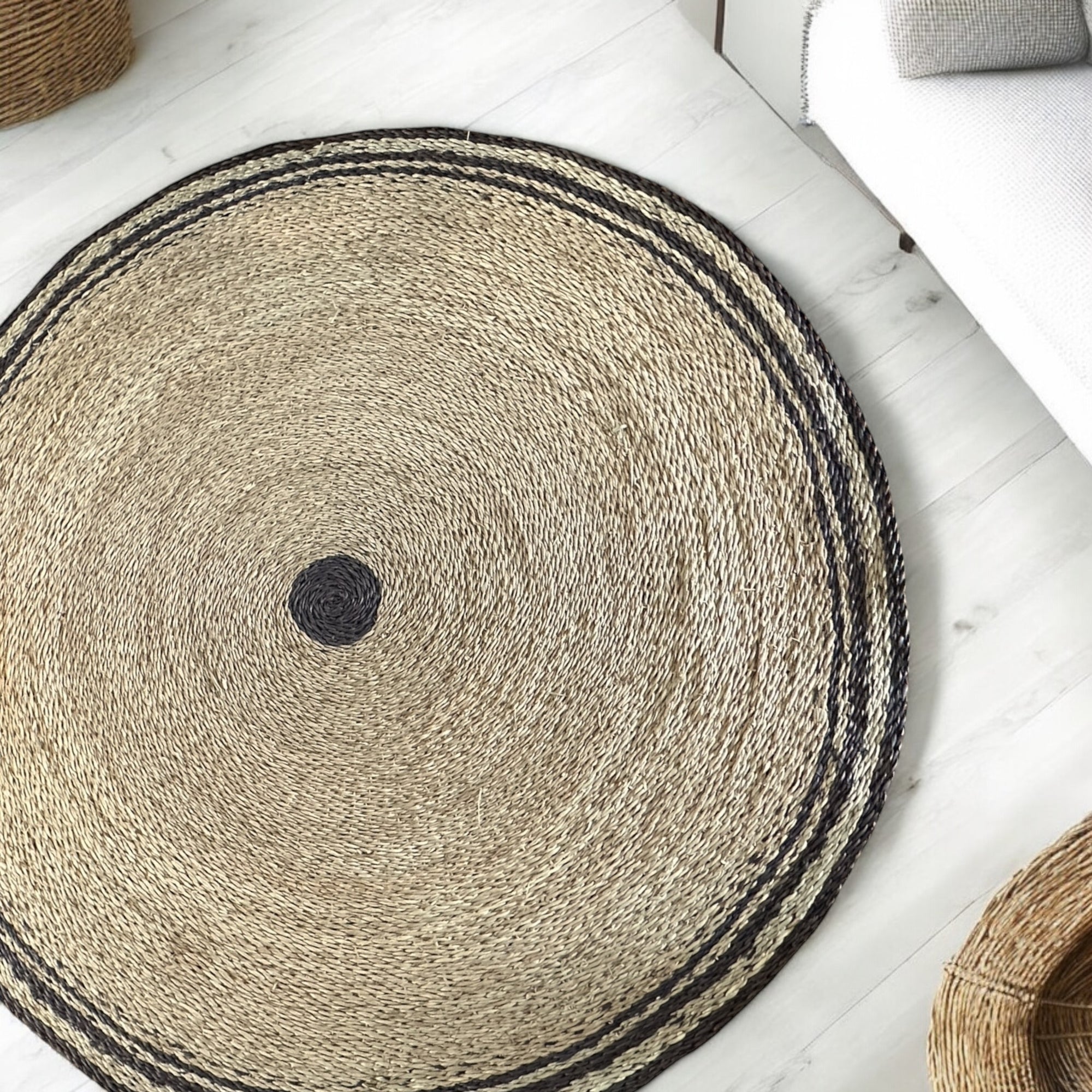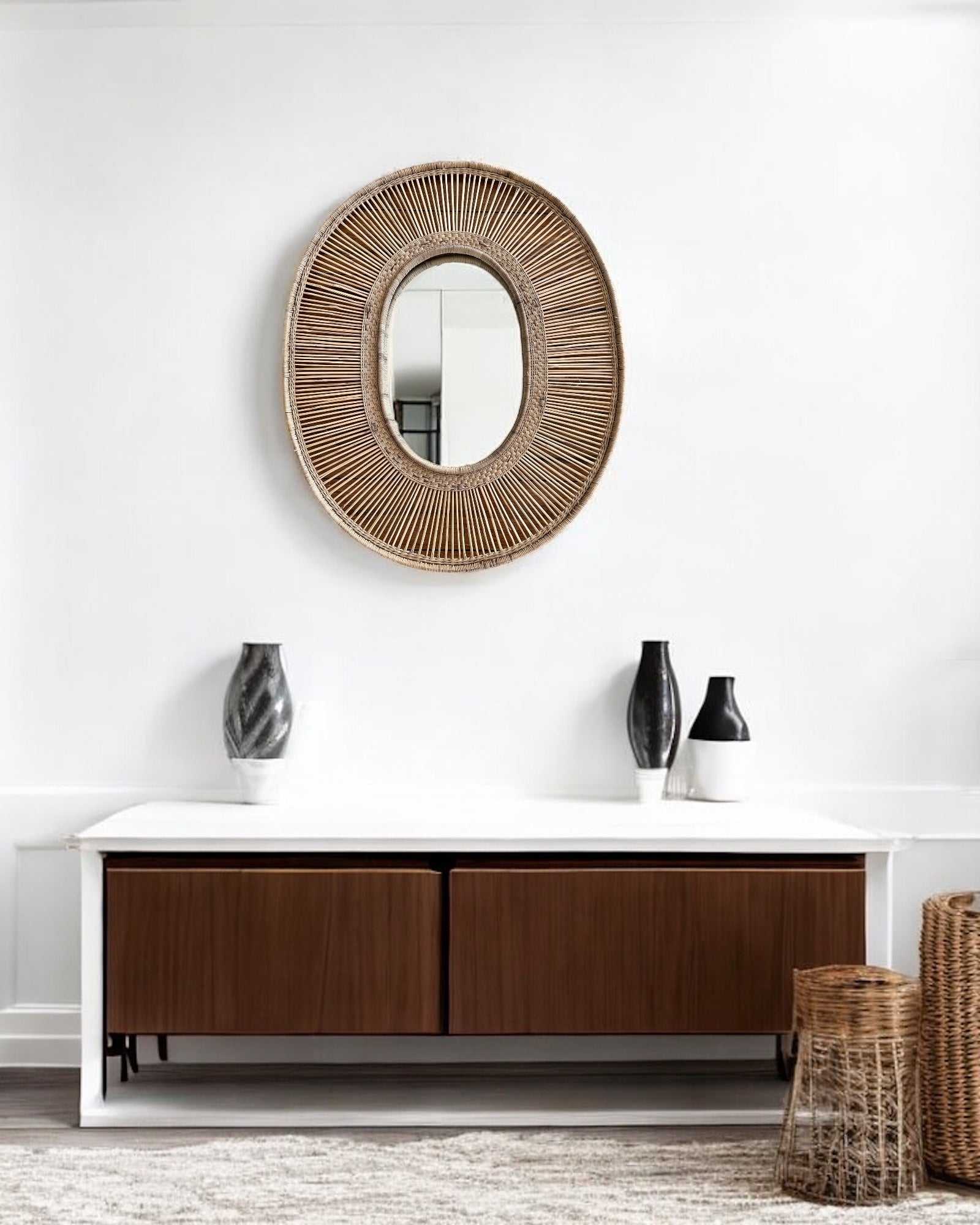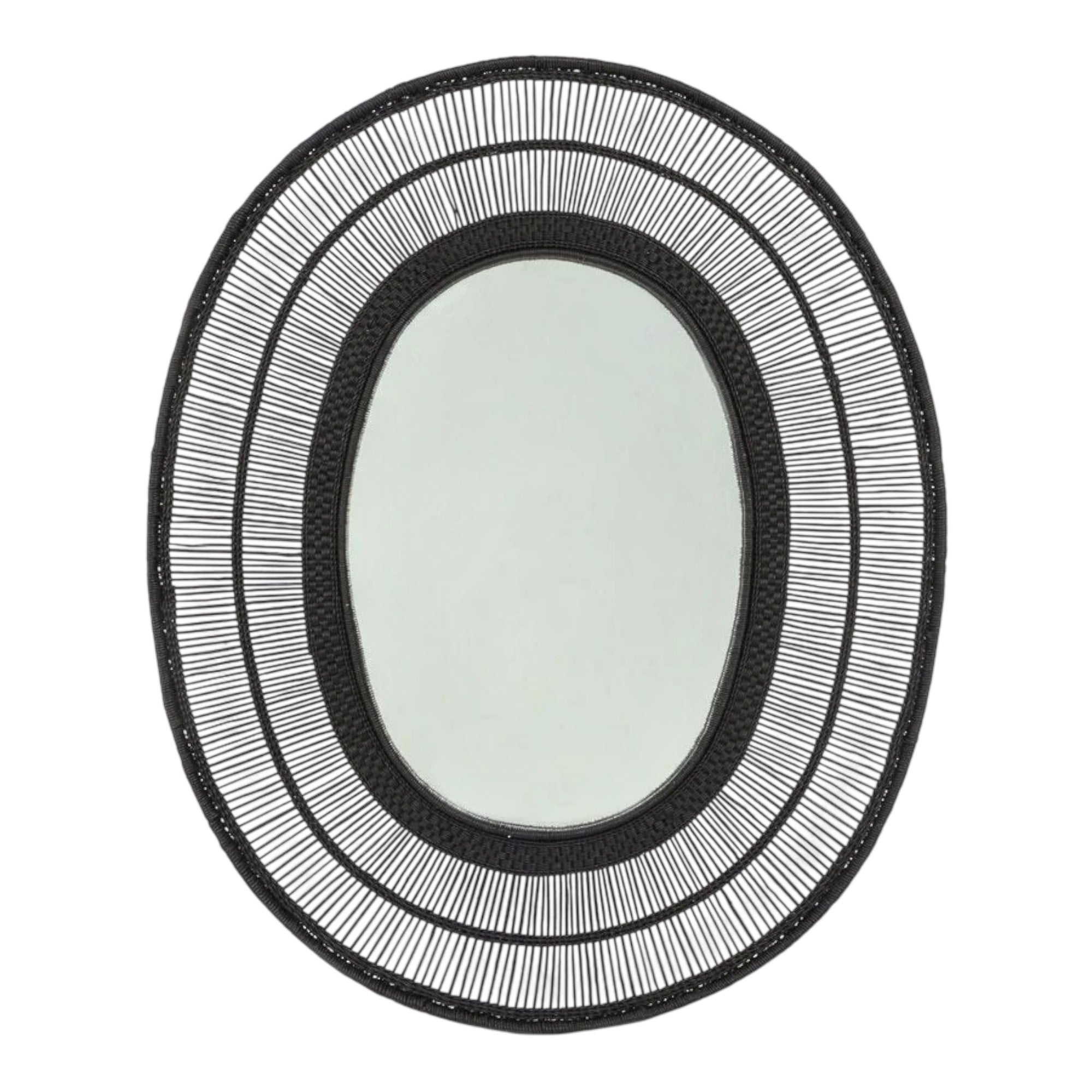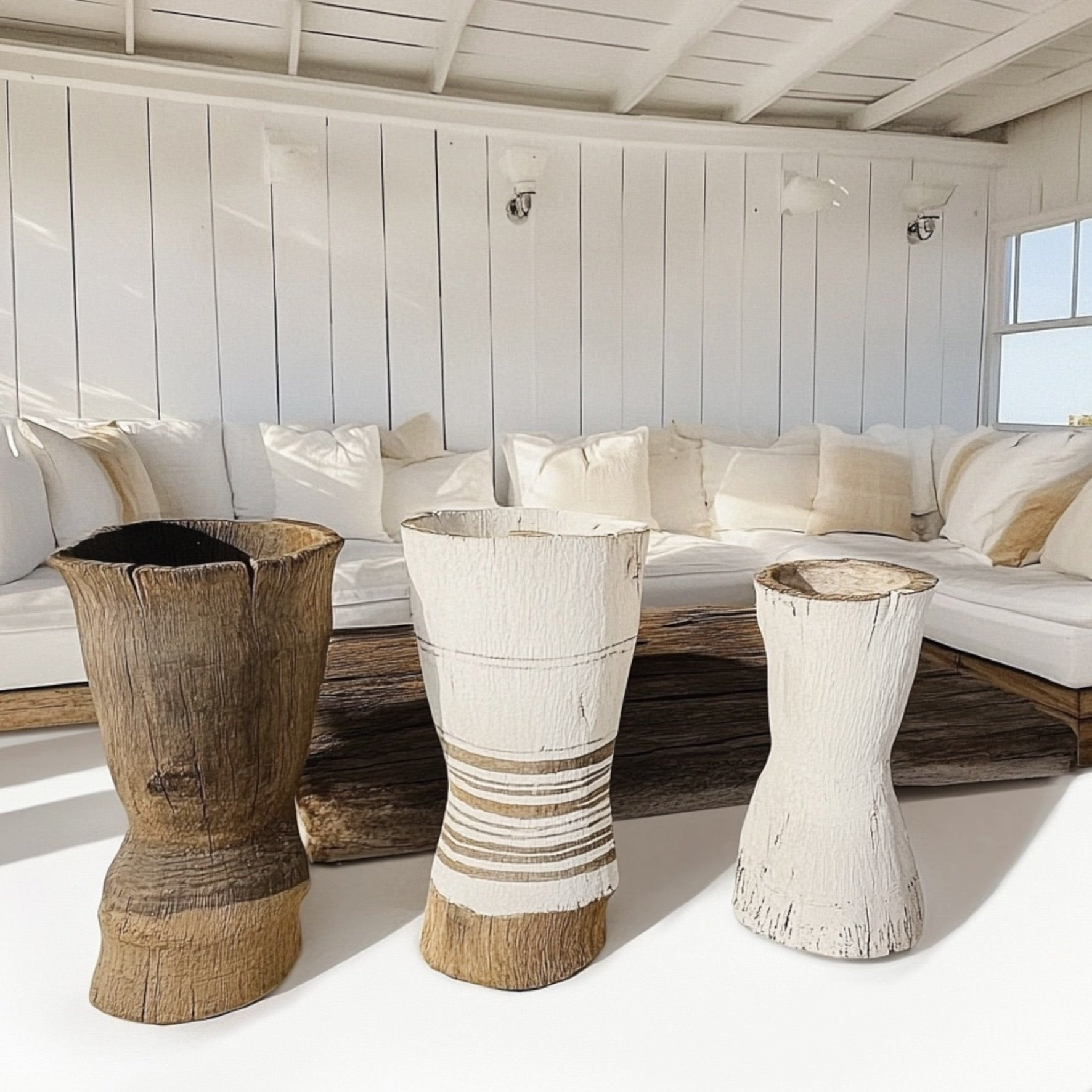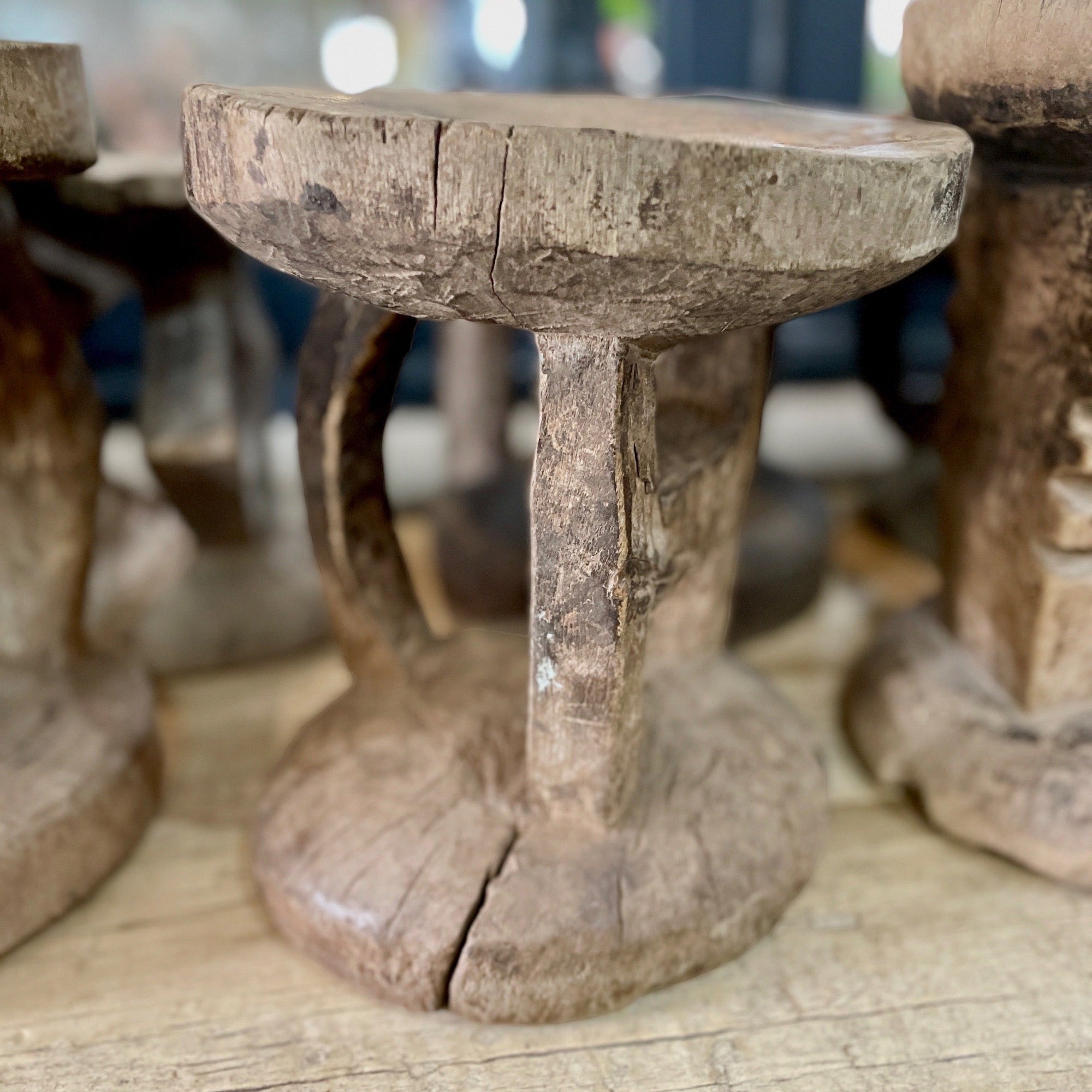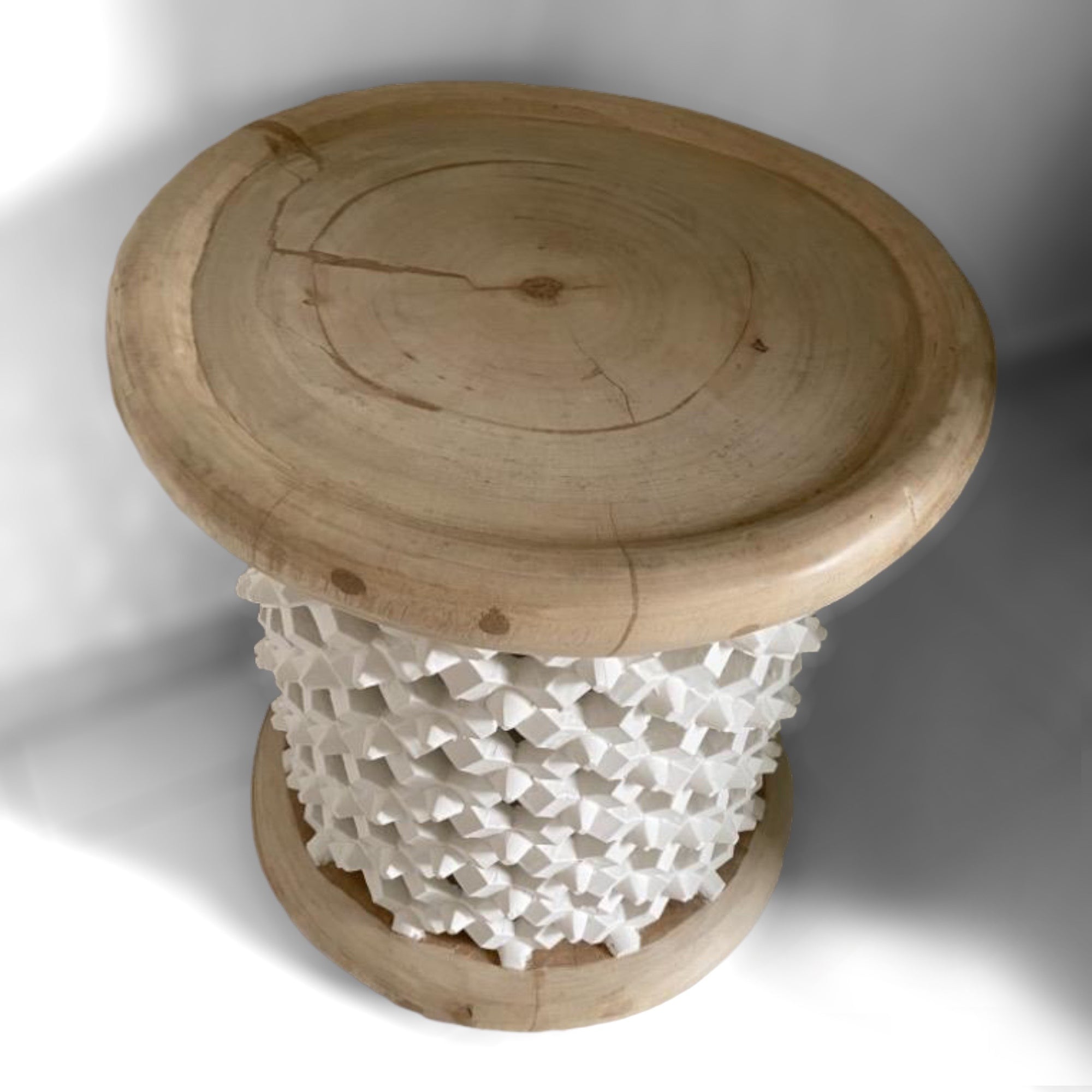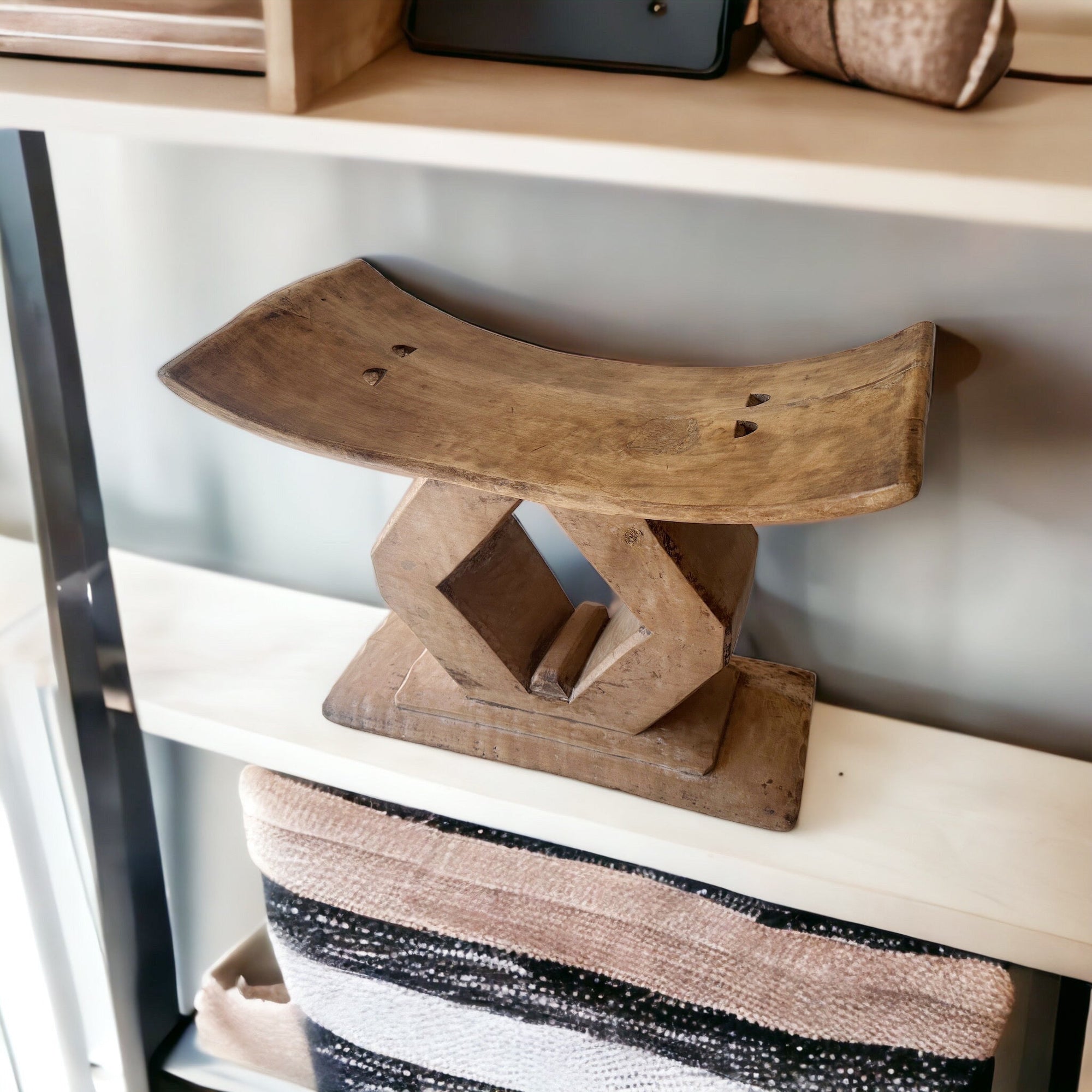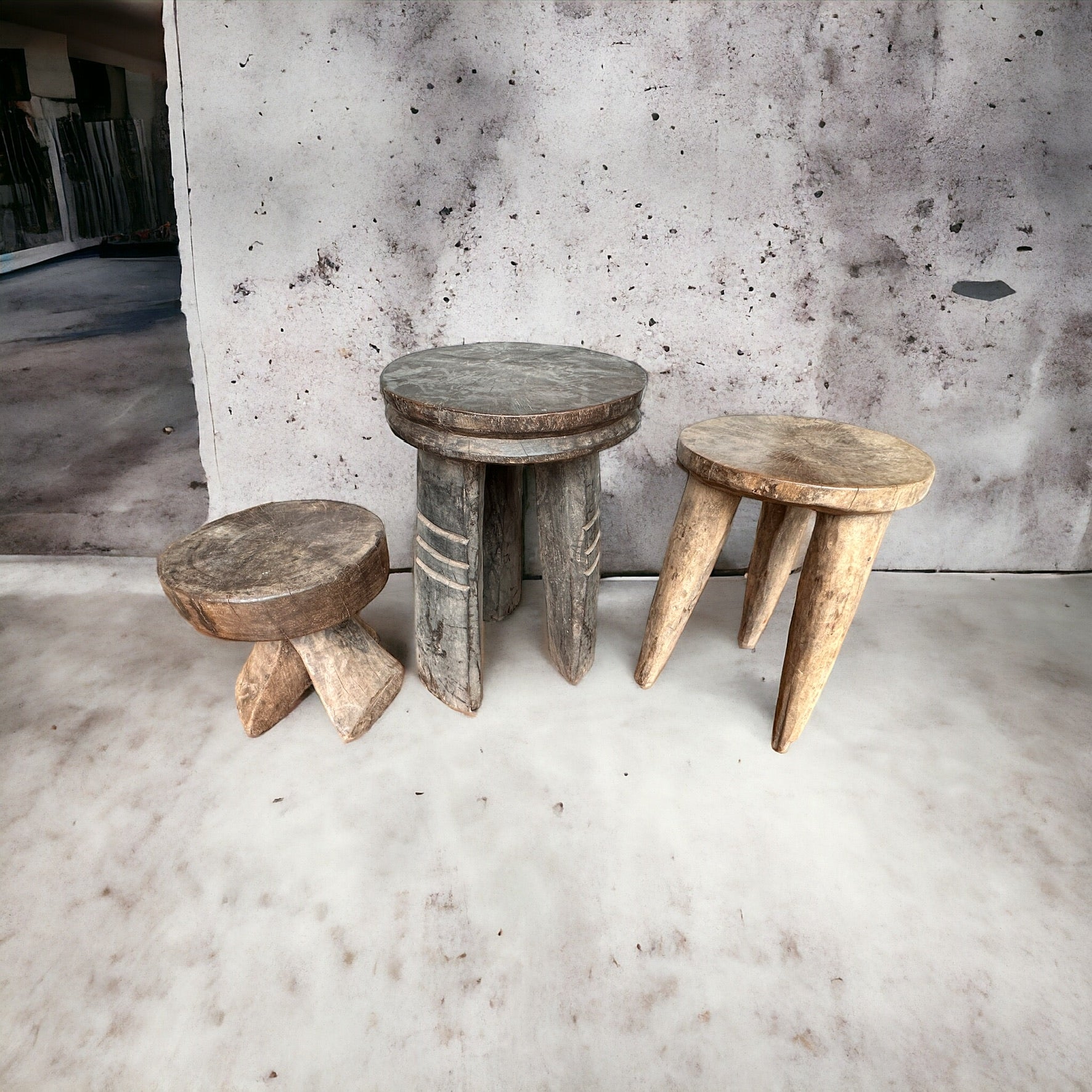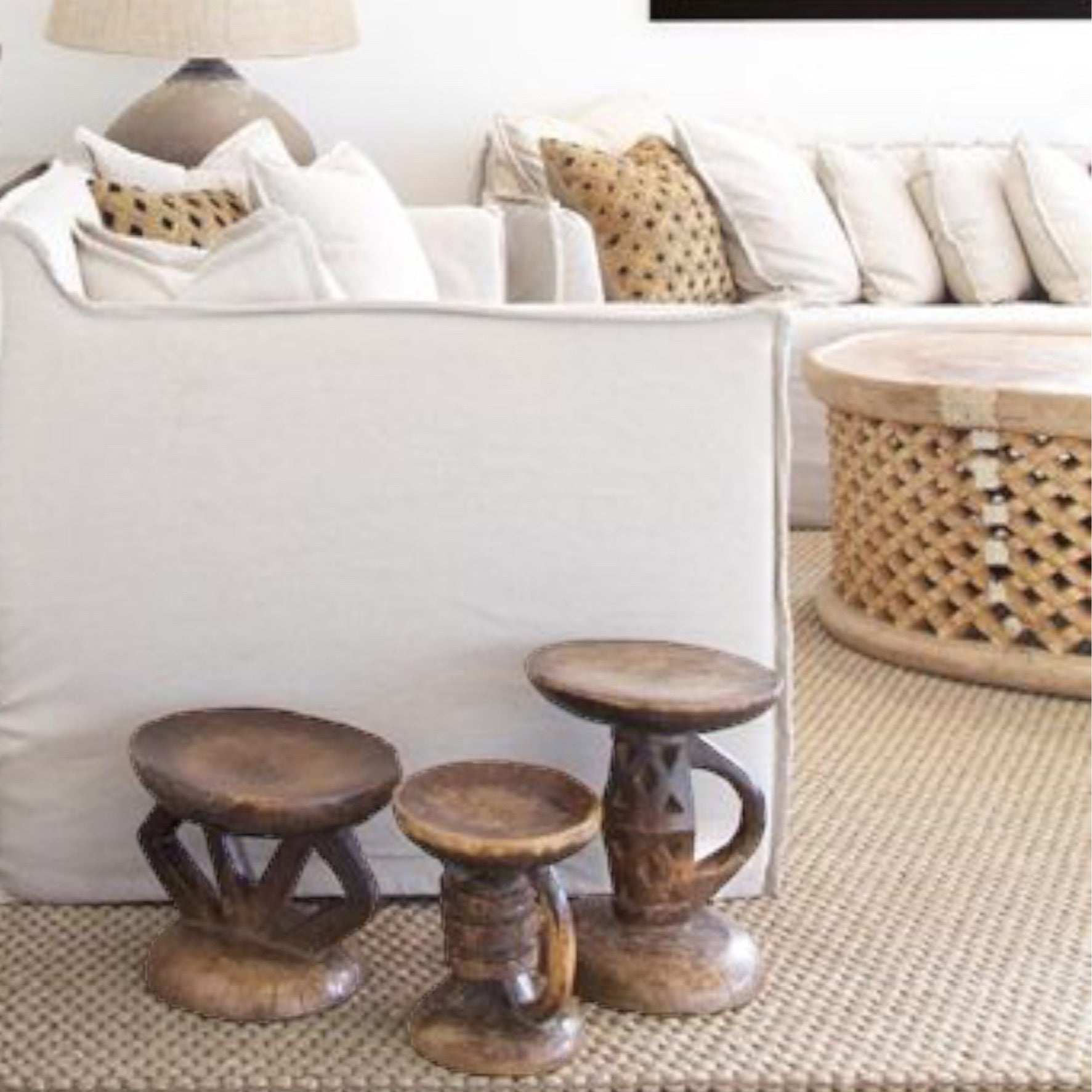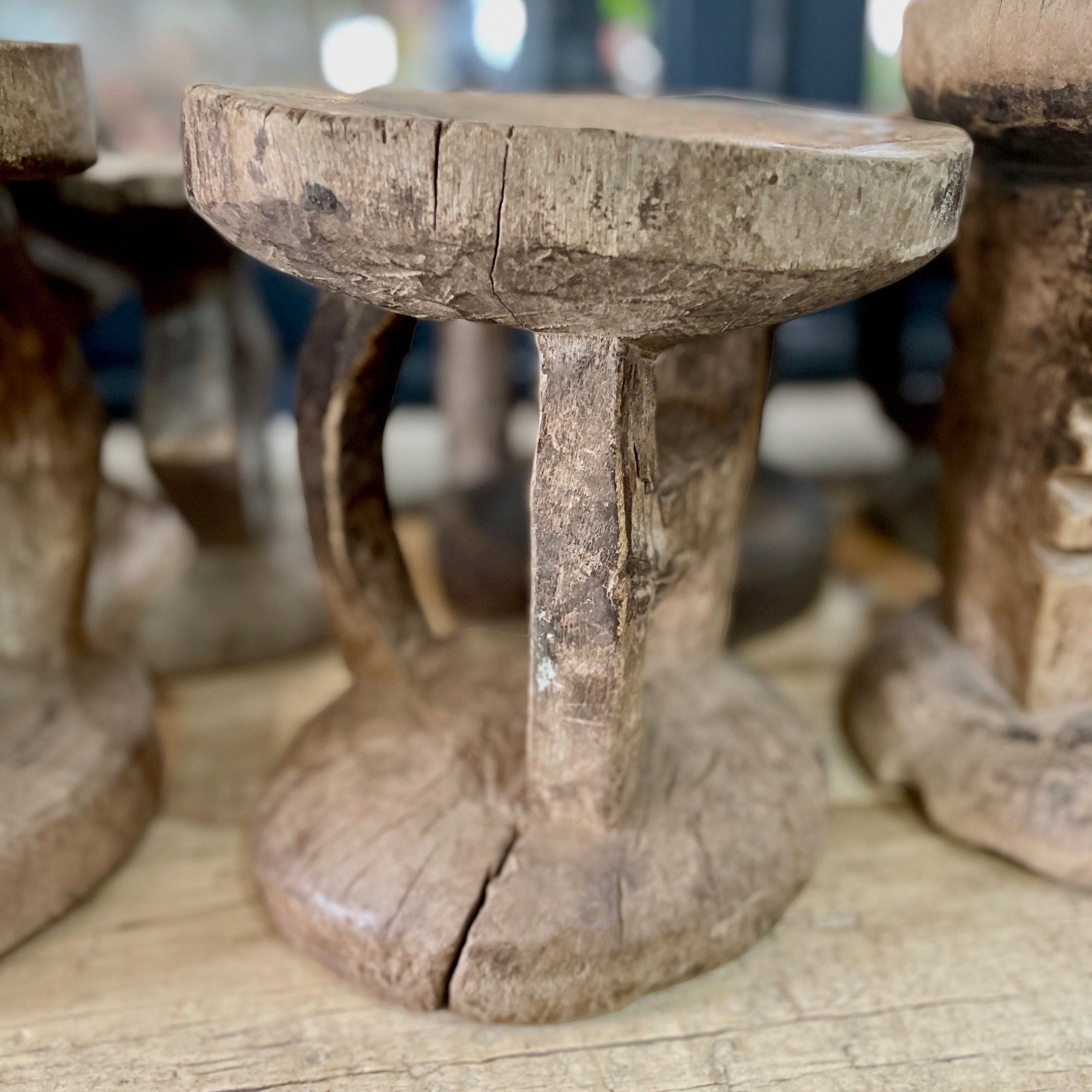Benches - Stools - Coffee Tables - Side Tables - Chairs - Ottomans - Headboards - Shelves
Home Furniture: Embracing African Craftsmanship and Sustainable Living
Navigating the world of home furniture can be as daunting as it is exciting. It's not just about filling spaces; it's about creating an ambience that reflects your personality and style. That's where the allure of handcrafted furniture comes into play, offering a unique blend of aesthetics and quality. I've always been drawn to pieces that tell a story, which is why I find the offerings from Eya Home Living so compelling. With their exquisite range of African home furniture, including Malawi furniture, Tonga stools, and Moroccan resin and bone side tables, they're not just selling furniture; they're offering a gateway to a rich cultural heritage.
What sets handcrafted furniture apart is the meticulous attention to detail and the story behind each piece. From the intricate designs of Ashanti stools to the elegant simplicity of Rattan stools, these pieces are more than just functional; they're works of art that bring warmth and character to any room. As I delve deeper into the world of home furniture, I'm excited to explore how these handcrafted treasures from Eya Home Living can transform a space, making it truly feel like home.
The Evolution of Home Furniture Design
Reflecting on the rich tapestry of home furniture design, I find the journey from traditional styles to contemporary innovations absolutely fascinating. This evolution not only showcases a remarkable transformation in aesthetics but also underlines the profound impact of technology on furniture design.
From Traditional to Contemporary
Tracing back to its origins, traditional home furniture was deeply rooted in cultural heritage and artisan craftsmanship. Pieces like Malawi cane chairs and Moroccan resin and bone side tables exemplify the intricate work and detail that defined furniture design in eras past. Each piece, from Tonga stools to West African Ashanti Stools, told a unique story of its origins, connecting users with distant cultures and traditions. The emphasis was on natural materials and handcrafted techniques, which imbued these items with a sense of warmth and authenticity unreplicated by modern mass production methods.
As we moved into the contemporary era, the definition of home furniture began to shift. The focus expanded from purely functional and traditional forms to include minimalist and innovative designs. Simplicity, clean lines, and efficiency started to dominate, influenced heavily by the modernist movement. This period marked a departure from the elaborate ornamental details of traditional furniture, embracing instead form fused with function. Today, the contemporary design spectrum is vast, including everything from sleek modular sofas to ergonomic office chairs, reflecting a broad diversity of tastes and lifestyles.
The Impact of Technology on Furniture
Technology has profoundly influenced the evolution of home furniture, revolutionising how pieces are designed, manufactured, and used. In the design phase, software tools enable designers to experiment with complex forms and structures, pushing the boundaries of what's possible. For instance, 3D printing technology allows for the creation of furniture pieces with intricate designs and shapes that would be difficult, if not impossible, to achieve through traditional methods.
On the manufacturing front, advances in machinery and materials have made it possible to produce furniture more efficiently and sustainably. Techniques such as CNC routing and laser cutting offer precision and flexibility, enabling the production of components with minimal waste. Moreover, the use of renewable materials and innovative recycling methods has started to make a significant impact on reducing the furniture industry's environmental footprint.
Technology also enhances the user experience of home furniture. Smart furniture, integrating technology for practical purposes such as charging electronic devices directly from a desk or sofa, is becoming increasingly popular. This convergence of technology and furniture design not only provides convenience but also opens new possibilities for how we interact with our living spaces.
In my exploration of home furniture, it's clear that the evolution from traditional to contemporary designs and the impact of technology are pivotal chapters in this ongoing story. Each piece, whether a handcrafted Tonga stool or a high-tech ergonomic chair, contributes to the diverse narrative of home furniture design, reflecting the changing times, tastes, and technologies that continue to shape our living environments.
Key Factors to Consider When Choosing Home Furniture
Choosing the right home furniture is crucial in setting the tone and functionality of one's living spaces. After exploring the rich history and cultural significance of various handcrafted furniture pieces, I'll delve into the practical aspects that one should consider when selecting furnishings for their home. These key factors will ensure not only an aesthetic harmony but also a practical and durable investment in one's comfort and lifestyle.
Material Quality and Durability
The selection of material is paramount in the longevity and durability of furniture. From the unique textures of African handcrafted pieces, such as Malawi cane chairs and Bamileke tables, to contemporary designs using metals and synthetics, the material dictates both the piece's lifespan and its maintenance requirements. I've learned that hardwoods like oak, teak, and mahogany, renowned for their durability and resilience to wear, make for an excellent choice in furniture that one intends to last for decades. In contrast, materials like particleboard, although more cost-effective, tend to have a shorter lifespan. It's critical for buyers to consider the balance between cost and endurance, especially in high-usage items like sofas and dining tables.
Comfort and Functionality
Despite the appeal of a piece's design, its comfort and functionality mustn't be overlooked. Furniture isn’t just to embellish a space but to serve a purpose and meet the needs of daily living. For instance, ergonomic chairs and desks have gained popularity for their role in supporting posture and reducing discomfort during prolonged use, which is incredibly relevant in today’s work-from-home culture. Similarly, the functionality of a piece, such as storage options in bed frames or extendable dining tables, can significantly enhance the utility of a space. When choosing furniture, it’s essential to consider one's lifestyle and the space's intended use to ensure that the pieces not only fit physically but also serve their intended purpose effectively.
Aesthetic Appeal and Style Compatibility
Finally, the aesthetic appeal and style compatibility play a significant role in selecting home furniture. As I've noted the storytelling power of unique pieces like the Tonga stools or Moroccan resin and bone side tables, integrating such items into one’s decor can add a layer of personality and interest. However, it's crucial to ensure that the chosen pieces harmonize with the existing decor and the home’s architectural style. Whether striving for a minimalist look, a traditional setting, or a modernist aesthetic influenced by technology, selecting pieces that complement and enhance the home’s overall theme is vital. This cohesion not only enhances the visual appeal of the space but also creates a conducive environment that reflects personal taste and comfort.
In my journey through the world of home furniture, recognizing these key factors has guided many in making informed choices. Whether it's the atmosphere evoked by a Malawi cone table or the sleek functionality of a contemporary smart desk, each piece contributes to the narrative of one’s home, underscoring the importance of thoughtful selection in furniture.
Malawi Home Furniture
Exploring the realms of handcrafted home furniture brings me to the heart of Africa, where the richness of tradition and culture is woven into each piece. Among these, Malawi furniture stands out for its distinctive craftsmanship and unique designs. The following sections delve into the essence of Malawi home furniture, highlighting pieces like cane chairs, benches, side and cone tables, and headboards.
Malawi Cane Chairs
Drawing from traditional techniques, Malawi cane chairs represent the epitome of artisanal skill. Crafted by local artisans, these chairs are made from natural cane, offering a sustainable and eco-friendly option for home furniture. The intricate weaving patterns not only exhibit a high level of craftsmanship but also ensure durability and comfort. Each chair, found at Eya Home Living, tells a story of cultural heritage and supports the local communities by bringing Malawian craftsmanship to homes globally.
Malawi Cane Bench
Similarly, the Malawi cane bench, available on the same platform, combines functionality with cultural aesthetics. These benches, made from the same high-quality cane as the chairs, feature a spacious seating area enhanced by the delicate weave that characterizes Malawi furniture. Ideal for both indoor and outdoor spaces, these benches offer versatility and style, making them a perfect addition to any home looking to infuse a bit of African artistry into their decor.
Malawi Side Tables
The Malawi side tables are yet another testament to the finesse of Malawian artisans. Offered in various designs – including the traditional, cone, and more contemporary styles – these side tables serve as an exquisite blend of function and style. Fabricated from durable materials, they provide a sturdy yet elegant surface for your lamps, books, or decorative items. Their lightweight design makes them easy to reposition, ensuring they fit perfectly in any room arrangement.
Malawi Cone Tables
The uniqueness of Malawi cone tables lies in their shape and structure. These tables, which taper towards the bottom, showcase the versatility of Malawi home furniture designs. Crafted with precision and care, the cone tables are not just furniture pieces but also works of art that can elevate the aesthetic appeal of any space. Their compact size and distinctive look make them a must-have for anyone appreciating functional artistry in home decor.
Malawi Headboards
Completing the ensemble of Malawi home furniture, the headboards are truly a statement of luxury and craftsmanship. Available in various designs, including woven patterns and the stunning Sun Circle, these headboards transform any bedroom into a serene retreat. Made with the same dedication to quality and design, they reflect the natural beauty and sophistication of Malawi craftsmanship. By choosing a Malawi headboard, one not only enhances the beauty of their home but also supports the rich tradition of African artisanal work.
In the realm of home furniture, pieces like these from Malawi are not just furnishings; they are symbols of cultural heritage, artistry, and sustainability. By incorporating Malawi home furniture into our spaces, we not only adorn our homes with beauty but also carry forward a legacy of craftsmanship and community support.
Bamileke Home Furniture
Following our journey through the cultural and artisan heritage of African home furniture, I'm thrilled to delve into the fascinating world of Bamileke tables, a testament to the extraordinary craftsmanship and enduring legacy of Cameroon's Bamileke region.
Bamileke Tables
Bamileke tables are not just pieces of home furniture; they're a bridge to the rich traditions and skilled craftsmanship of the Bamileke people in Cameroon. The tables, often carved from a single piece of wood, feature intricate designs and patterns that reflect the spiritual and social significance in Bamileke culture. Available in shades like dark brown and natural, these tables serve multiple purposes: from being a centerpiece in a living room to a functional piece of art that sparks conversation among guests. I've seen firsthand how the dark brown Bamileke tables provide a warm, earthy feel to a space, while the natural variants add a subtle, organic touch. Each table is a unique piece, bearing the marks and personality of the artisan who created it. By incorporating Bamileke tables into our homes, we're not only enhancing our living spaces with beautiful, durable furniture, but we're also supporting the artisans and communities that continue to preserve these age-old techniques and traditions.
Tonga Home Furniture
Tonga Stools
Diving into the realm of Tonga home furniture, I find the Tonga stools a fascinating aspect of African craftsmanship. These stools, each uniquely handcrafted, offer more than just seating; they serve as a decorative symbol of the rich Tonga culture. Originating from the Tonga people of Zimbabwe and Zambia, these stools represent a timeless link to traditional African artistry.
The stools available at EYA Home Living showcase the beauty of natural materials, with designs that subtly marry the antique with the modern. Crafted from sturdy wood, some feature intricate patterns and others, a more minimalist appeal, highlighting the natural grain and texture of the wood. The New Vintage Tonga Stools, for example, stand out not only for their aesthetic appeal but also for their versatility. They easily transition from a functional piece of seating to an ornamental artefact that enhances any room's decor.
Investing in a Tonga stool means not just acquiring a piece of furniture but also supporting the artisans behind these creations. By incorporating Tonga stools into our homes, we embrace a piece of African heritage and contribute to the preservation and appreciation of traditional craftsmanship. This connection to culture and history makes Tonga stools a distinctive choice for anyone looking to infuse their home furniture collection with meaning and style.
West African Ashanti Home Furniture
As I delve deeper into the realm of home furniture with a focus on African craftsmanship, the West African Ashanti stools particularly catch my attention. These stools aren't merely furniture; they embody a rich history, culture, and artistry that trace back to the Ashanti people of Ghana.
West African Ashanti Stools
Exploring the world of Ashanti stools, I've found that each piece is a testament to the skill and creativity of West African artisans. Crafted from a single block of wood, these stools symbolize a connection to the earth and the ancestors, making them more than just seating options. They serve as a stunning focal point in any room, offering both functionality and a deep cultural narrative. The intricate designs and detailing on each stool reveal stories and proverbs from the Ashanti culture, making them unique pieces of art.
Discovering these stools on a platform like Eyahome Living reveals a profound respect for traditional craftsmanship. Each purchase not only enhances one's home with a piece of West African heritage but also supports the local tribes and communities who have been crafting these stools for generations. Adding an Ashanti stool to your home furniture collection not only brings a piece of African culture into your living space but also supports the preservation and appreciation of this incredible art form.
How to Care for Your Home Furniture
In my journey as a keen observer and admirer of home furniture, especially those with rich narratives like the African pieces I've explored, I've come to understand that owning such items isn't merely about possession. It's about stewardship. Ensuring the longevity and beauty of these pieces requires knowledge and attentiveness. Let's delve into the essential care practices that will help maintain your home furniture's charm and durability over time.
Routine Cleaning and Maintenance Tips
Firstly, it's crucial to establish a routine cleaning schedule for your home furniture. Dust and dirt can subtly wear down even the sturdiest materials, so regular dusting with a soft, dry cloth for wooden pieces is advisable. For textiles, such as cushion covers or fabric upholstery commonly found on Malawi chairs or Moroccan resin and bone side tables, vacuuming with a low-suction setting will prevent buildup without damaging the fabrics.
When dealing with more robust materials, like the rattan in Malawi cane chairs or the resin in Moroccan tables, a slightly damp cloth can remove grime without saturating the material. However, it's important to immediately follow up with a dry cloth to avoid water damage.
For more profound cleaning, especially for items with intricate designs like Bamileke tables or Ashanti stools, using a soft-bristled brush can dislodge dust from nooks and crannies without scratching the wood. Remember, it's the gentle care that preserves the unique beauty and integrity of these pieces.
Protecting Furniture from Wear and Tear
My experience has shown me that furniture wear and tear isn't just a result of accidents or misuse; it's often due to daily exposure to elements we might not consider harmful. Sunlight, for instance, can fade and weaken materials. Placing your furniture away from direct sunlight, or using blinds and curtains, can significantly reduce this risk.
Another aspect to consider is the humid environment which might affect certain materials like wood and rattan, common in African home furniture. Using a dehumidifier in particularly damp climates can prevent warping and mold growth.
Moreover, when rearranging furniture, I've found it effective to lift rather than drag pieces across the floor. This prevents undue stress on furniture joints and protects floors from scratches – ensuring both your furniture and flooring remain pristine.
Lastly, for those exquisite pieces that might require a bit higher level of care, like Malawi headboards or Tonga stools, using coasters and protective pads can prevent surface damage from spills or scrapes, maintaining their aesthetic appeal and historical significance.
Sustainable Furniture Choices for Eco-Conscious Homes
Building on our exploration of the cultural and artistic significance of traditional African pieces, it becomes increasingly important to discuss sustainable furniture choices for eco-conscious homes. These options not only support the global sustainability movement but also help in preserving the craftsmanship and heritage of local communities, much like the African pieces discussed earlier.
Benefits of Sustainable Furniture
Sustainable furniture offers a myriad of benefits, both environmental and social. Firstly, it reduces the impact on the planet by utilising materials that are renewable, recycled, or responsibly sourced. For instance, furniture made from bamboo grows back quickly compared to traditional wood, making it a more sustainable choice. Secondly, sustainable furniture often involves less energy-intensive manufacturing processes, further reducing its carbon footprint.
Socially, choosing sustainable furniture supports fair trade practices and the livelihoods of artisan communities. By prioritising products that ensure fair compensation and working conditions for artisans, we contribute positively to their well-being. For me, this mirrors the importance of supporting traditional African craftsmanship, as promoting eco-friendly furniture can also lead to preserving unique cultural heritages.
How to Identify Eco-Friendly Furniture
Identifying eco-friendly furniture involves looking for certain certifications and material choices. Key certifications include the Forest Stewardship Council (FSC) certification, which ensures the wood has been sourced from responsibly managed forests. Additionally, materials such as recycled metal, reclaimed wood, or bamboo signify a product's eco-friendliness due to their low environmental impact.
When evaluating furniture, I also consider the durability and potential for recycling at the end of its life. Well-crafted pieces that can withstand the test of time reduce the need for frequent replacements, thus contributing to sustainable living. Furthermore, furnishings that can be easily disassembled and recycled showcase manufacturers' commitment to a circular economy.
In integrating sustainable furniture into our homes, we not only make a positive impact on the environment but also support communities and preserve cultural heritage. Such choices echo the values found in appreciating and caring for the unique home furniture pieces derived from African craftsmanship, where the story behind the item is as important as its functionality and aesthetic appeal.
Key Takeaways
- Unique Craftsmanship and Cultural Heritage: Handcrafted furniture, such as Malawi cane chairs and Bamileke tables, not only provides distinctive aesthetic appeal but also carries deep cultural significance, reflecting the rich heritage of the communities that create them.
- Evolution of Home Furniture Design: The transition from traditional to contemporary home furniture designs showcases the impact of technological advancements and changing tastes over time, opening new possibilities for innovation in design and functionality.
- Sustainability and Eco-Friendliness: Opting for sustainable furniture choices, made from renewable resources or
Conclusion
Choosing the right furniture for your home is about more than just filling spaces. It's a reflection of your values and a celebration of cultural heritage. Through my exploration of handcrafted African furniture and sustainable choices, I've shown how each piece tells a story of craftsmanship, community, and care for our planet. Remember, the beauty of your home lies not just in its appearance but in the stories behind the furniture you choose. Opting for pieces that are as kind to the environment as they are to the eye ensures a home that's not only beautiful but also embodies a legacy of sustainability and cultural respect. Let's make mindful choices that support artisans and the earth alike. After all, a well-chosen piece of furniture doesn't just complete a room—it enriches our lives.
Frequently Asked Questions
What is the significance of handcrafted African home furniture pieces?
Handcrafted African furniture, such as Ashanti stools, Malawi furniture, Bamileke tables, and Tonga stools, are celebrated for their exceptional craftsmanship and unique designs. These pieces seamlessly blend antique and modern styles, showcasing the rich cultural and artistic heritage of Africa while adding a distinct touch to home decor.
How should I care for my handcrafted African home furniture?
To maintain the beauty and integrity of your handcrafted African furniture, it is crucial to practice gentle care. Avoid harsh chemicals and excessive water. Instead, use a soft cloth for regular dusting and a mild cleaner for occasional wipes. This ensures the longevity and preservation of the furniture's natural beauty.
Why is choosing sustainable furniture important for eco-conscious homes?
Sustainable furniture is vital for eco-conscious homes as it reduces environmental impact and supports social causes. By opting for pieces made from eco-friendly materials and processes, consumers contribute to reducing waste, conserving natural resources, and supporting artisan communities. This choice promotes a healthier planet and sustains cultural heritage.
How can I identify eco-friendly furniture?
To identify eco-friendly furniture, look for certifications such as FSC (Forest Stewardship Council) for wood or textiles verified by environmental standards. Pay attention to the materials used, preferring natural, recycled, or sustainably sourced options. Durability and recyclability are also key indicators of sustainable furniture, highlighting the importance of long-lasting and reusable materials.
How does integrating sustainable furniture benefit the environment and communities?
Integrating sustainable furniture into our homes benefits the environment by minimising harmful emissions, reducing waste, and conserving natural resources. Moreover, it supports artisan communities by providing fair working conditions and promoting the preservation of traditional crafts. This approach not only safeguards the environment but also ensures that cultural heritage and craftsmanship are valued and passed down through generations.
What types of home furniture are available at Eya Home Living?
Eya Home Living offers a wide range of home furniture including chairs, benches, tables, headboards, stools, ottomans, and shelving. Each piece is handcrafted, blending authentic African artistry with modern design elements.
How does African handcrafted furniture differ from mass-produced furniture?
Handcrafted African furniture is created using traditional techniques and natural materials, giving each item a unique look and cultural significance. Unlike mass-produced pieces, no two items are identical, and the craftsmanship ensures durability, authenticity, and a deeper story behind every design.
Do Malawi chairs and benches work well in contemporary homes?
Yes. Malawi cane chairs and benches are versatile enough to fit into both traditional and modern interiors. Their natural textures complement minimalist décor while adding warmth and character to contemporary living spaces.
Can I use Eya Home Living’s furniture outdoors?
Many of our handcrafted pieces, such as Malawi benches and cane chairs, are suitable for covered outdoor areas. To extend their life, we recommend protecting them from direct sun, rain, and harsh weather exposure.
What makes Bamileke tables popular for living rooms?
Bamileke tables, carved from solid wood with intricate designs, are highly sought after as statement pieces. They serve as functional coffee tables while doubling as artistic centerpieces that elevate the atmosphere of a lounge or entertainment area.
Is your home furniture collection eco-friendly?
Yes. Our artisans primarily use natural and sustainably sourced materials such as cane, wood, and rattan. By choosing eco-conscious production methods, our furniture supports both environmental preservation and artisan livelihoods across Africa.
How can I style stools and ottomans in small spaces?
Stools and ottomans are excellent multifunctional pieces. They can be used as additional seating, footrests, or even side tables in compact apartments. Their lightweight design also makes them easy to move around depending on your needs.
What is the best way to clean and maintain handcrafted wooden furniture?
Use a soft, dry cloth for regular dusting. For deeper cleaning, wipe gently with a slightly damp cloth and avoid harsh chemicals. Applying natural oils or furniture wax occasionally will help preserve the wood’s finish and protect it against wear.
Do you deliver furniture across South Africa?
Yes. Eya Home Living delivers home furniture throughout South Africa. Delivery times vary depending on stock availability and location, but every item is carefully packaged to ensure it arrives in perfect condition.
Can Eya Home Living furniture be customised?
Some items can be customised depending on the artisan’s process and available materials. Customers can inquire about size adjustments, finishes, or special requests to ensure their furniture fits seamlessly into their home.
Home Furniture Collection | Eya Home Living
Welcome to Home Furniture Elegance
Step into a realm of exquisite Home Furniture at Eya Home Living, nestled in the heart of vibrant Sandton, South Africa. Our curated collection pays homage to African craftsmanship, seamlessly blending functionality with aesthetic appeal.
Chairs: The Throne of Comfort
Discover our wide range of chairs, each piece a perfect blend of comfort and style. From the intricately designed Malawi Chairs to modern ergonomic options, find a seat that speaks to your style.
Tables: The Heart of Gatherings
Our tables are more than just home furniture; they are the gathering points for family and friends. With a variety of designs, from the traditional Bamileke tables to contemporary pieces, each table is crafted to be the centrepiece of your dining or living room.
Benches: The Versatile Seating
Benches in our collection offer a blend of versatility and style. Ideal for any room, they provide additional seating while adding a touch of elegance.
Headboards: The Crown of Rest
Elevate your bedrooms with our range of headboards, designed to be the focal point of your restful retreat. The unique designs add a touch of sophistication, ensuring a serene and stylish ambience.
Unveiling Quality and Durability
At Eya Home Living, we prioritise quality and durability, ensuring each home furniture piece stands the test of time. Our meticulous attention to detail and the use of premium materials reflect our commitment to excellence.
Your Journey of Discovery
Embark on a journey of discovery on our user-friendly website. With a seamless online shopping experience, finding the perfect piece for your home is just a click away. Transform your living spaces with Eya Home Living’s Home Furniture collection, where each piece is a statement of style and comfort.
Eya Home Living: Crafting a narrative of comfort and elegance, one home furniture piece at a time.
Elevate your interior with Eya Home Living’s curated home furniture collection, where timeless design meets authentic African craftsmanship. From statement wooden tables to handcrafted Malawi furniture, each piece is thoughtfully made to bring warmth, character, and function into your living space. Looking to enhance your aesthetic even further? Pair your furniture with textural baskets, stylish storage baskets, or decorative touches like our unique wall decor. With roots in heritage and a passion for quality, Eya Home Living is your trusted home decor shop for soulful, elevated living.
Read less



